Bessie Coleman was a pioneering aviator who faced racial and gender discrimination in 1920s America. In spite of it, she traveled to France and became the first African American and Native American woman to earn a pilot's license, who later captivated audiences as a barnstorming stunt pilot and an advocate for racial equality.
In the Beginning
Elizabeth “Bessie” Coleman was born on January 26, 1892, in the heart of Texas. She was the daughter of George Coleman, who proudly claimed Cherokee and African roots, and Susan Richardson, who also descended from African ancestry. As one of thirteen children, nine of who only survived until adulthood.1 Bessie grew up during the tumultuous Jim Crow era, and her early life was shaped by the harsh realities of racial and gender discrimination that permeated American society.
But Bessie, the daughter of sharecroppers living in rural Texas with a family struggling during the realities of post-Civil War America, wasn’t about to let it stop her.
Her tenacity and determination can be linked back to her mother, Susan, who wasn’t about to let her kids grow up without an education, even after their father, George Coleman, decided to move back to Indian territory in Oklahoma to escape the growing discrimination and lynching practices in Texas, in 1901.2
After he left, Susan Coleman, Bessie, and the rest of the Coleman children remained in Texas, where Susan found work as a maid and a cook for a local white family in order to provide for her family.
During this time in her young life is when Bessie began to dream of flying and freedom. These formative years laid the groundwork for the woman she was destined to become.
First, despite extreme poverty and systemic racism, Bessie's mother instilled in her children a deep desire for education and self-improvement. While she, and George Coleman, had never learned to read or write, Susan made it a priority to ensure her children did. Which is why we can find Bessie attending school in 1898 – two years before the Plessy v Ferguson decision (when the US Supreme Court established the legality of the “separate but equal” doctrine in schools).
While Susan worked long hard hours, Bessie helped tend to her siblings and care for their home. As part of these new found responsibilities, Bessie began using her new education to read to her younger siblings.
This brings me to the second moment that defined who Bessie Coleman was as a person. As she read to her younger siblings, one of the books that came across her path was Uncle Tom’s Cabin. While the book had been written by abolitionists and was popular among white progressives, Bessie did not like the portrayal of the enslaved people in the book.
A message she would repeat later in life, when she declared her ambitions to become a pilot, and to, “make Uncle Tom’s cabin into a hanger for a flying school.” Her flying school.
Pursuit of Education and Aviation Dreams
Before learning to fly, but after her childhood in Texas, Bessie Coleman briefly studied at the Colored Agricultural and Normal University in Oklahoma, present day Langston University, but school was expensive and she was only able to save enough money for one semester. After she dropped out, she moved to Chicago along with two of her brothers where she attended the Burnham School of Beauty and Culture in 1915. During World War I, she worked as a manicurist at the White Sox Barber Shop, where she first heard stories from veterans returning home from the war about flying and being a pilot. These stories reignited her desire to learn to fly and she began to apply to flying schools across the United States.
Each time she heard back from a school she had applied to, it was the same reply – rejected due to her gender and her race. Notably, Bessie felt frustrated, and it wasn’t until one of her brothers returned home from France after his tour during World War I that her spirits lifted again. He told his little sister how, in France, women were allowed to fly. She knew it was the path she was looking for – if America wouldn’t have her, maybe France would.
Young and outgoing, Bessie had used her time as a manicurist wisely, making lots of connections around Chicago. Now, armed with the information about women flying in France, she reached out to Robert S. Abbot, a friend who was the editor and publisher of the Chicago Weekly Defender – a distinguished African American Newspaper. With his help, Bessie Coleman took on a better paying job, learned French, and turned her sights on French Flight Schools. Like she had in the U.S., Bessie sent off her applications to flight schools around France, but unlike the U.S., her application was accepted by Caudron Brothers School of Aviation in Le Crotoy, France, a fight school that had been established by to brothers who had the privilege of learning about flying from none other than the Wright Brothers.
With an American Passport and a one year tourist Visa, on November 22, 1920, Bessie Coleman boarded the S.S. Imperator and sailed to France.
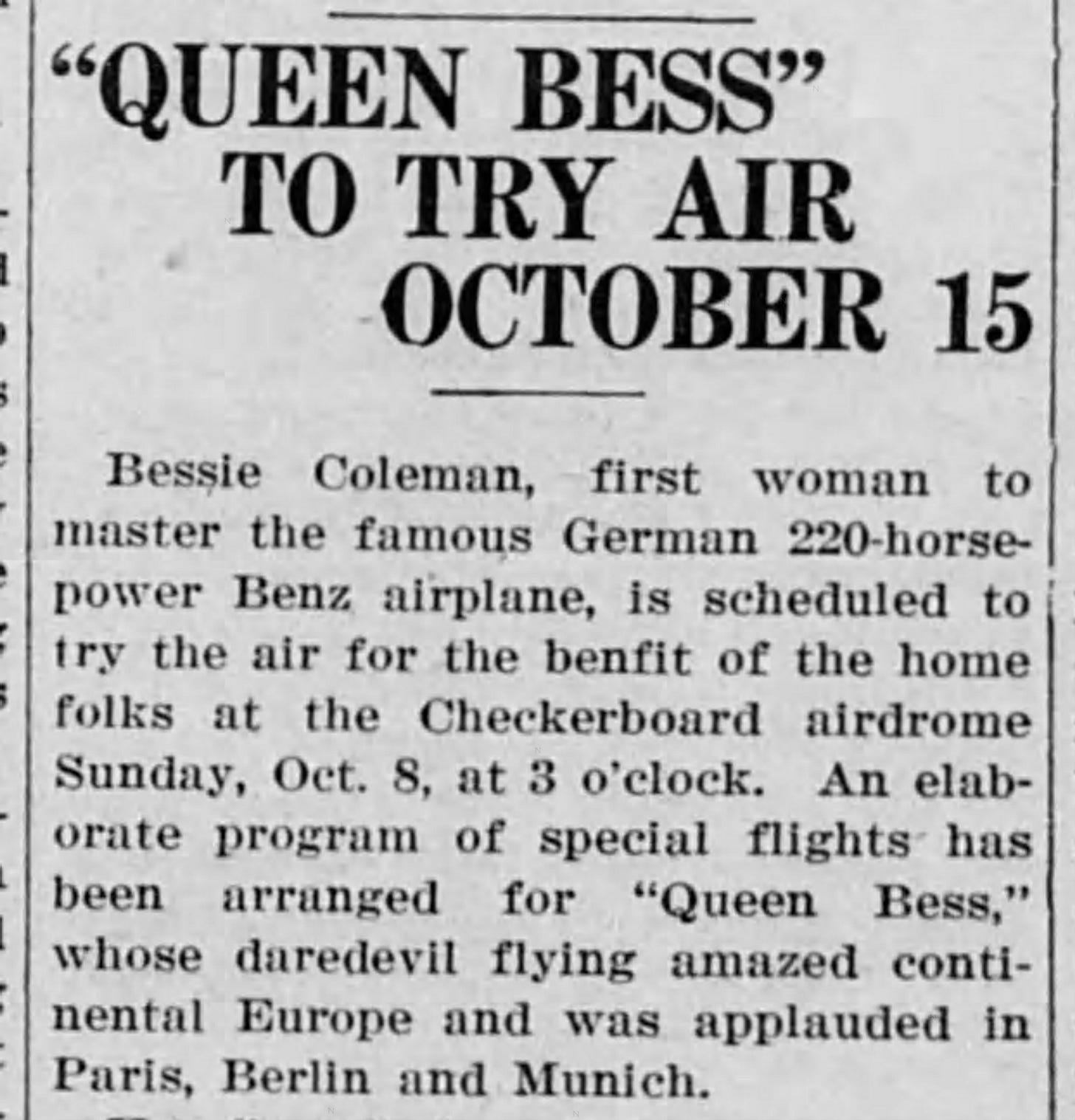
Return and Aerial Performance
Upon returning to the United States, Coleman was greeted by newspaper reporters of several African American Newspapers and she also received a silver loving cup from the cast of the Broadway hit, Shuffle Along. This is the moment she adopted the title of "Queen Bess" and displayed all of her extra flight training that included performing loop-the-loops and stunt piloting, which was the only civilian piloting job to exist at that time.
At the height of her fame, Bessie Coleman was even approached by Hollywood, where she was invited to star in, Shadow and Sunshine, which she was excited about since the film was being produced by the African American Seminole Film Company. In the end, Coleman walked off set when she discovered her character began the film dressed in rags. Bessie declared, “No Uncle Tom stuff for me!”
Her decision to walk from the movie was met with negative reactions by the industry and it even impacted her ability to book flying appearances at the African American fairs, but that still didn’t stop her. Bessie worked on her own screenplay, which she intended to have made – one day. She left New York, where the Seminole Film Company studio was located, and headed back to Chicago, where she started working on her lecture and performance tours around the world.
Her two main goals were not changed. They were to promote aviation for all people regardless of gender or race, and also to fight racism and inequality. She used her fame to incite change by refusing to speak in any place that was segregated, including her hometown in Texas. When asked to perform in Waxahachie, Coleman refused unless everyone was allowed in the area through the same gate. The request was granted and blacks and whites were permitted to enter the white arena through the same gate, even though they were still segregated inside.
April 30, 1926
Less than a year after her performance in Waxahachie, Texas, “Brave Bessie” Coleman traveled to Jacksonville, Florida. where she was scheduled to perform one of her death defying stunt shows sponsored by the Negro Welfare League. During a rehearsal, she was taken up by a fellow pilot to scout the area they would be performing in. As they cruised 3,000 feet in the air, a loose wrench lodged in the engine, flipping the plane. Normally, this would not have been an issue, but on this ill gotten day, Bessie Coleman was in a plane that lacked a safety belt that fit her small frame, and when the plane tipped over, she fell to her death.
She was just 34 years old.
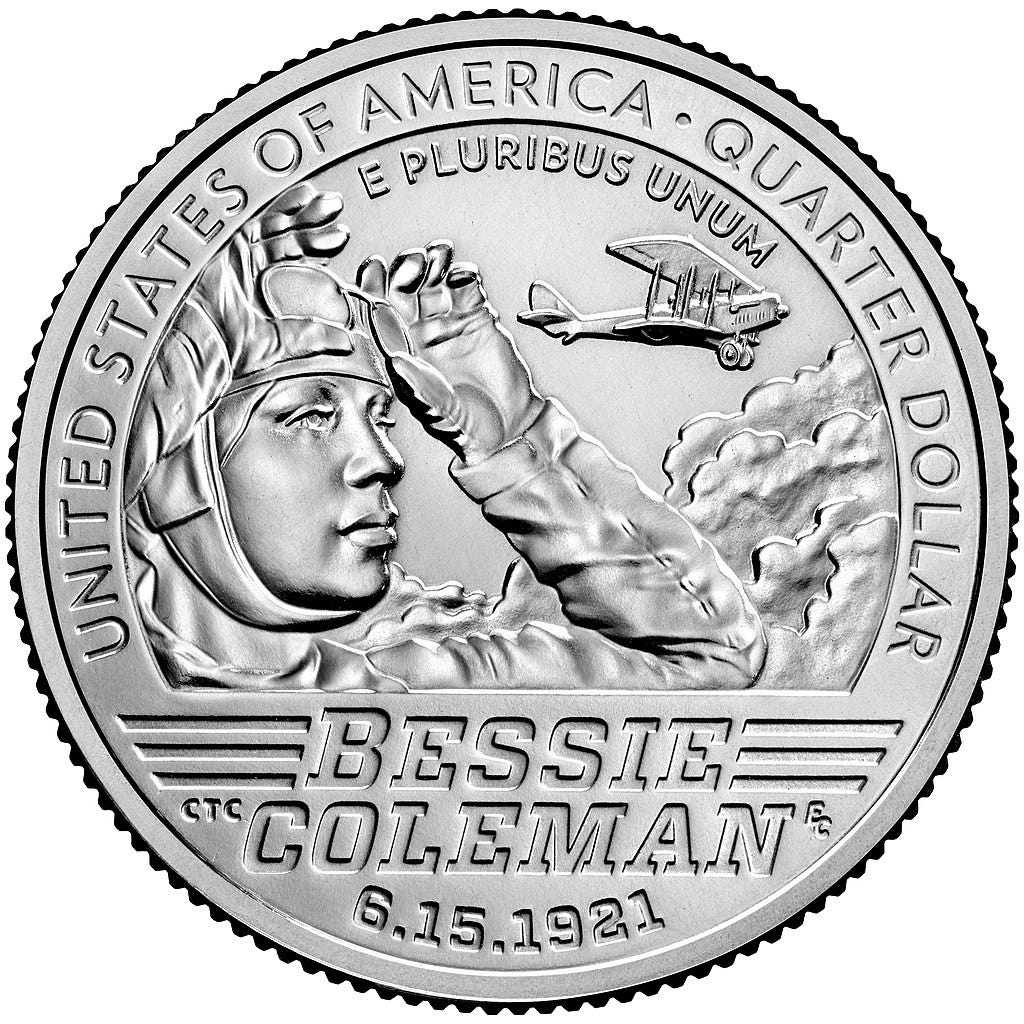
Though her life was brief, Bessie Coleman's impact was lasting. It has been nearly 100 years since her passing, and we are still talking about how she paved the way for future Black aviators, including the Tuskegee Airmen and later pilots like the Commemorative Air Force's first Black female pilot - Captain Theresa Claiborne.
Her courage in facing seemingly insurmountable obstacles continues to inspire generations, and reminds us that while life may look or even feel impossible – it doesn’t mean that it really is.
"Because of Bessie Coleman, we have overcome that which was worse than racial barriers. We have overcome the barriers within ourselves and dared to dream." Lieutenant William J. Powell Black Wings (1934)
Bessie Coleman's life embodied the spirit of perseverance, courage, and breaking through barriers. Her legacy reminds us that with determination, no dream is truly impossible.
Tune in to Big Blend Radio on Monday, November 25th to hear me talk with Lisa Smith and other wonderful Big Blend contributors about Bessie Coleman and other great aviators in History.
To learn more about about Genealogy by Aryn - head over to GenealogybyAryn.com, stop by and say hi on BlueSky - TikTok - Instagram - Facebook
Barbara Anne Ganson. Texas Takes Wing : A Century of Flight in the Lone Star State. Austin, University Of Texas Press, 2014, p. 46.
Alexander, Kerri Lee. “Bessie Coleman.” National Women’s History Museum, Dec. 2018, www.womenshistory.org/education-resources/biographies/bessie-coleman.


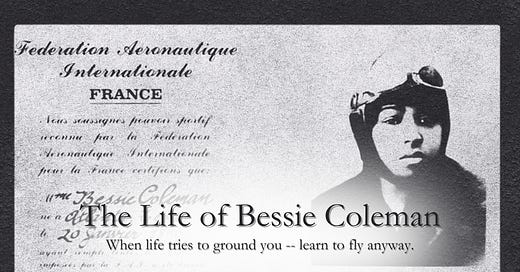



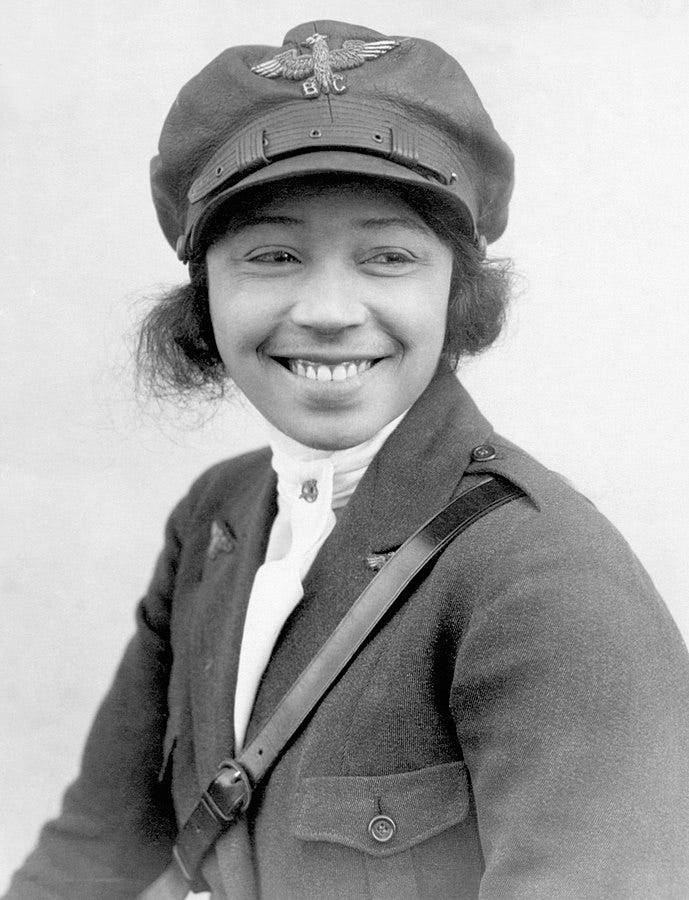
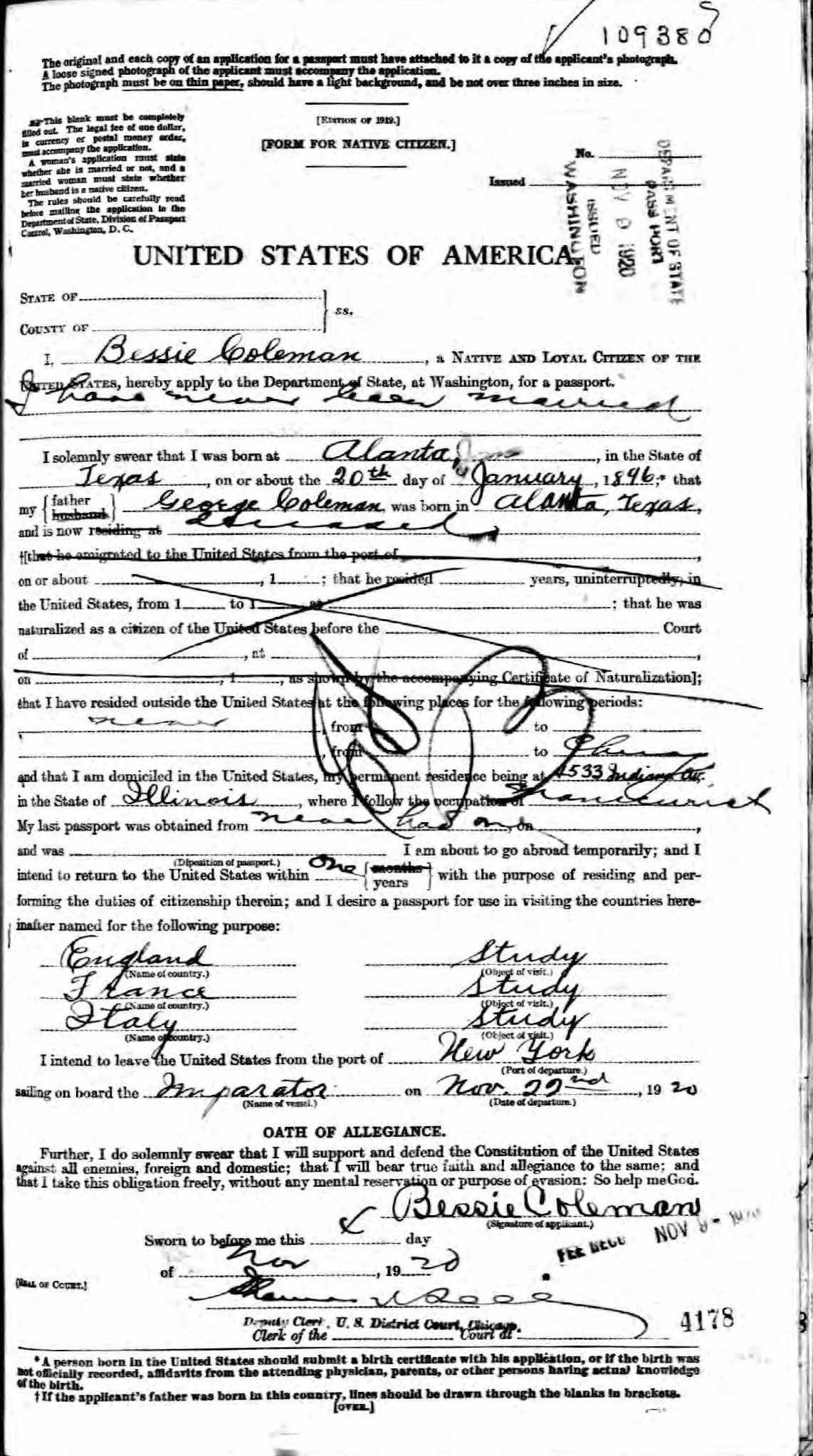
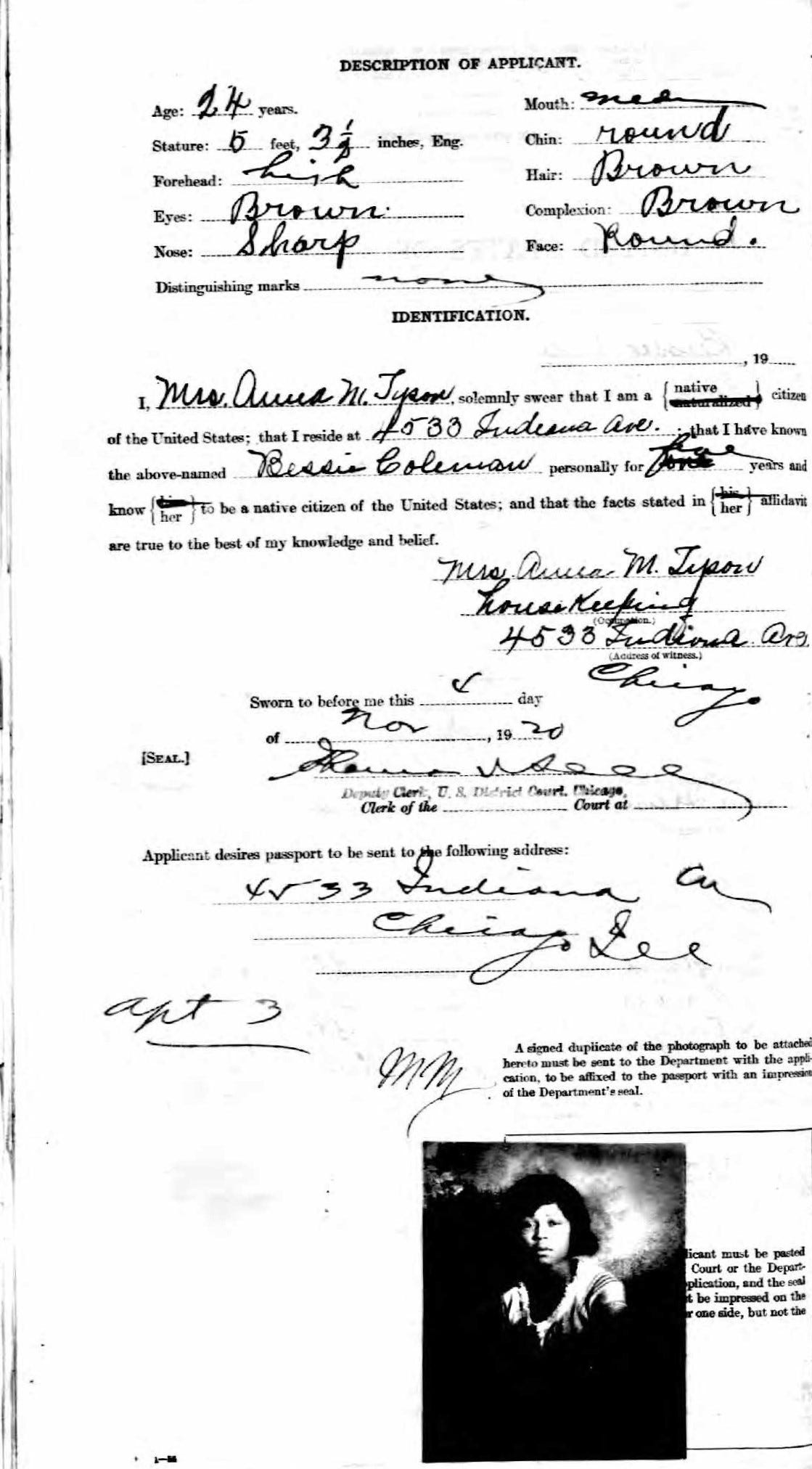
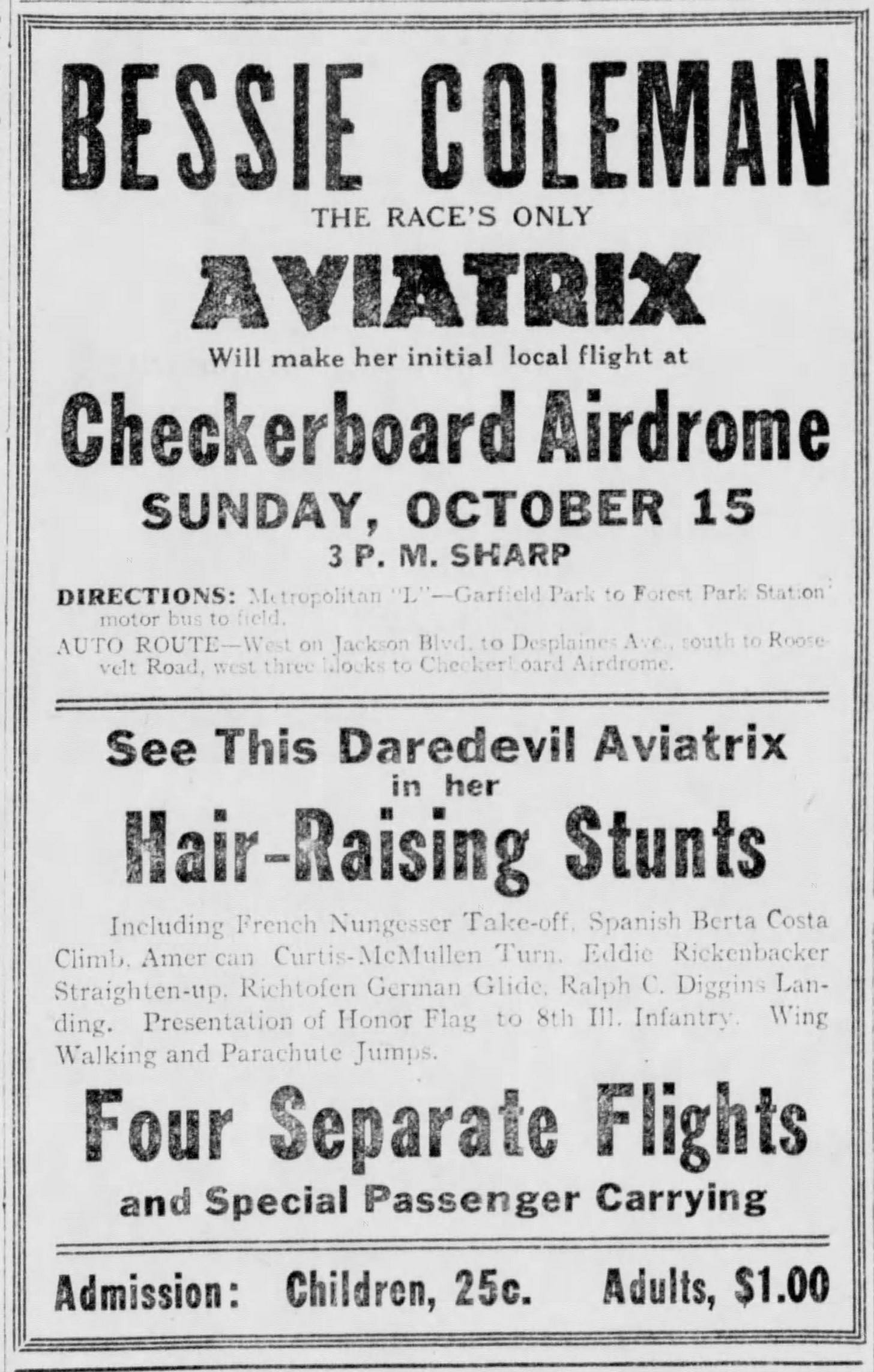

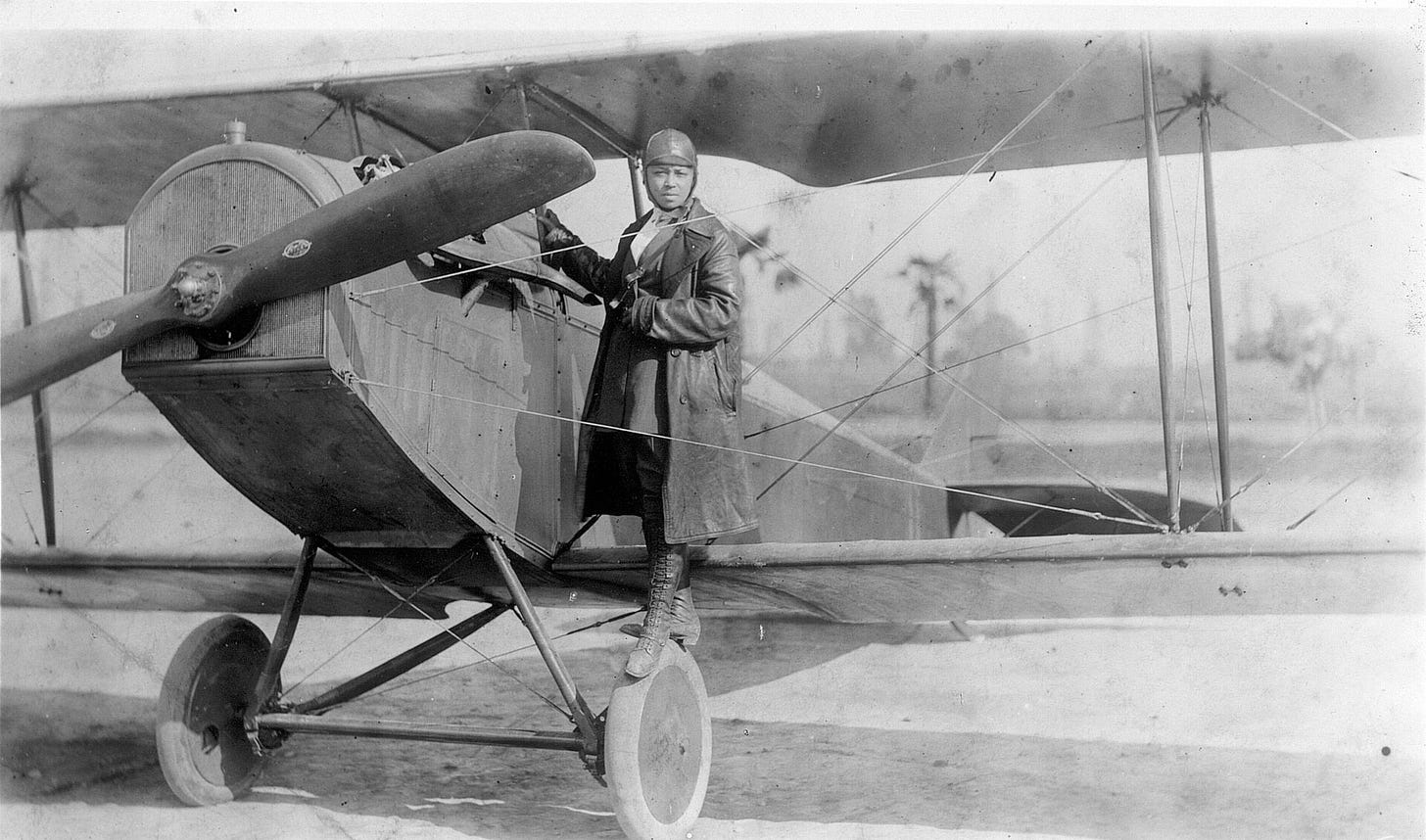
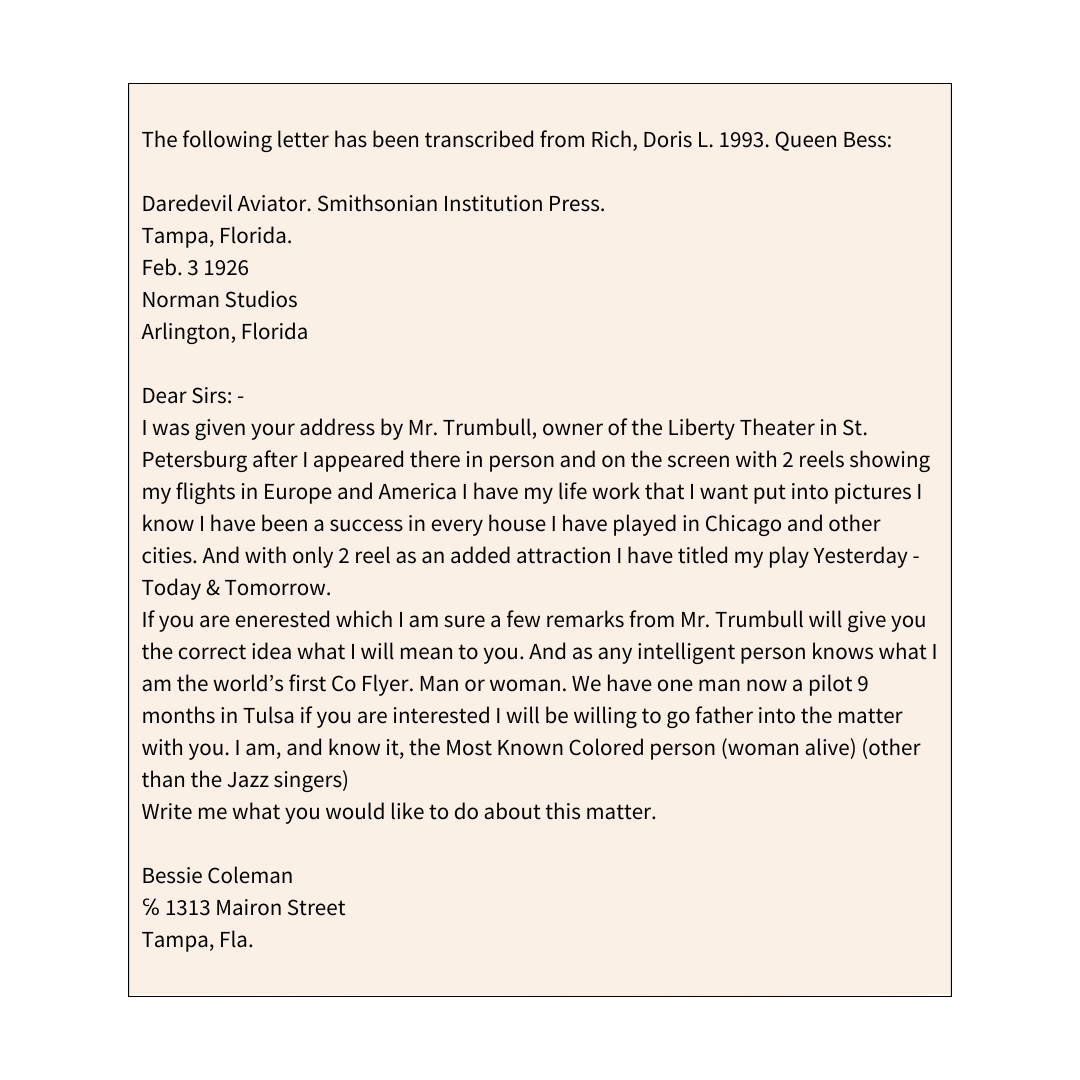
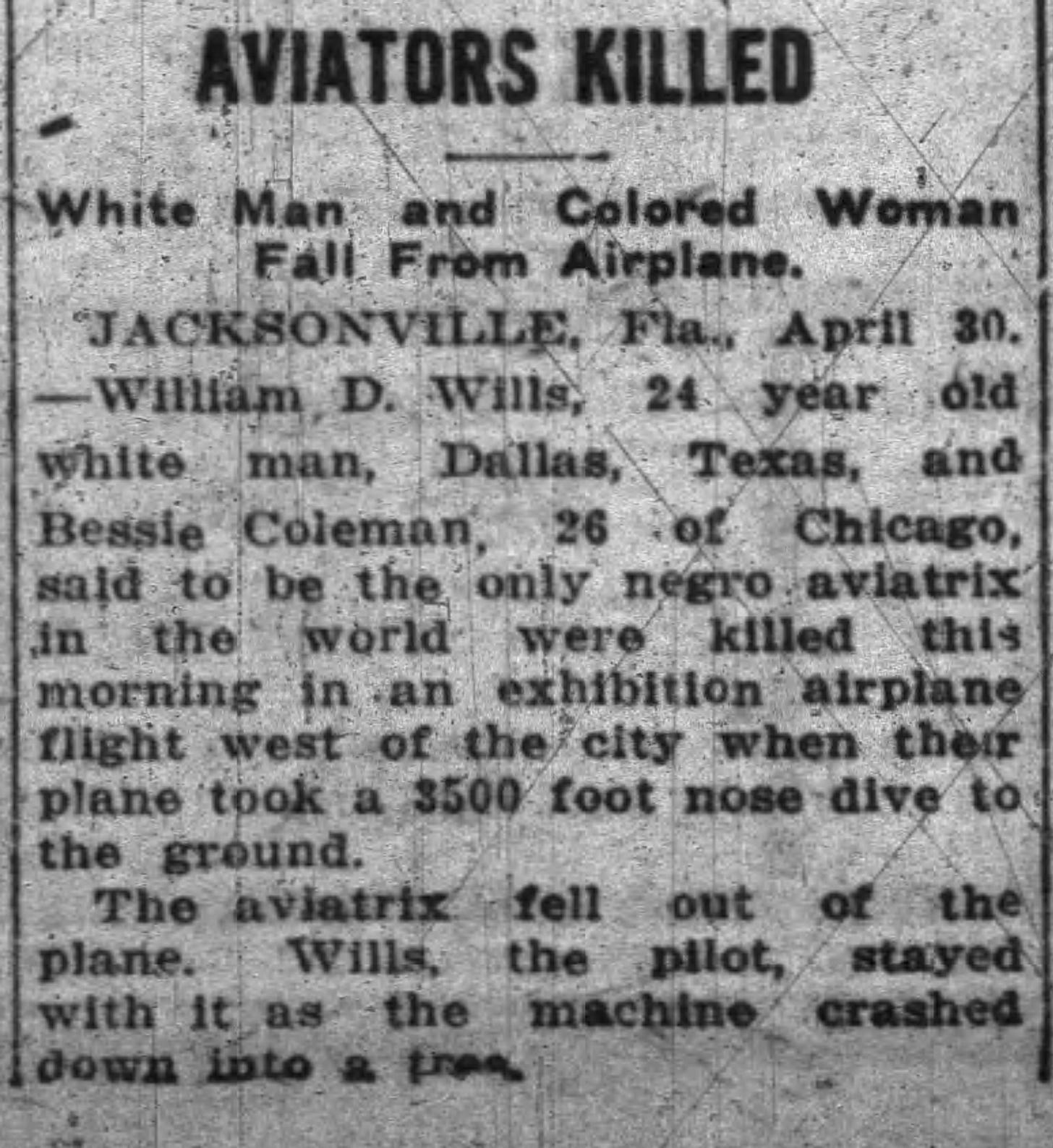
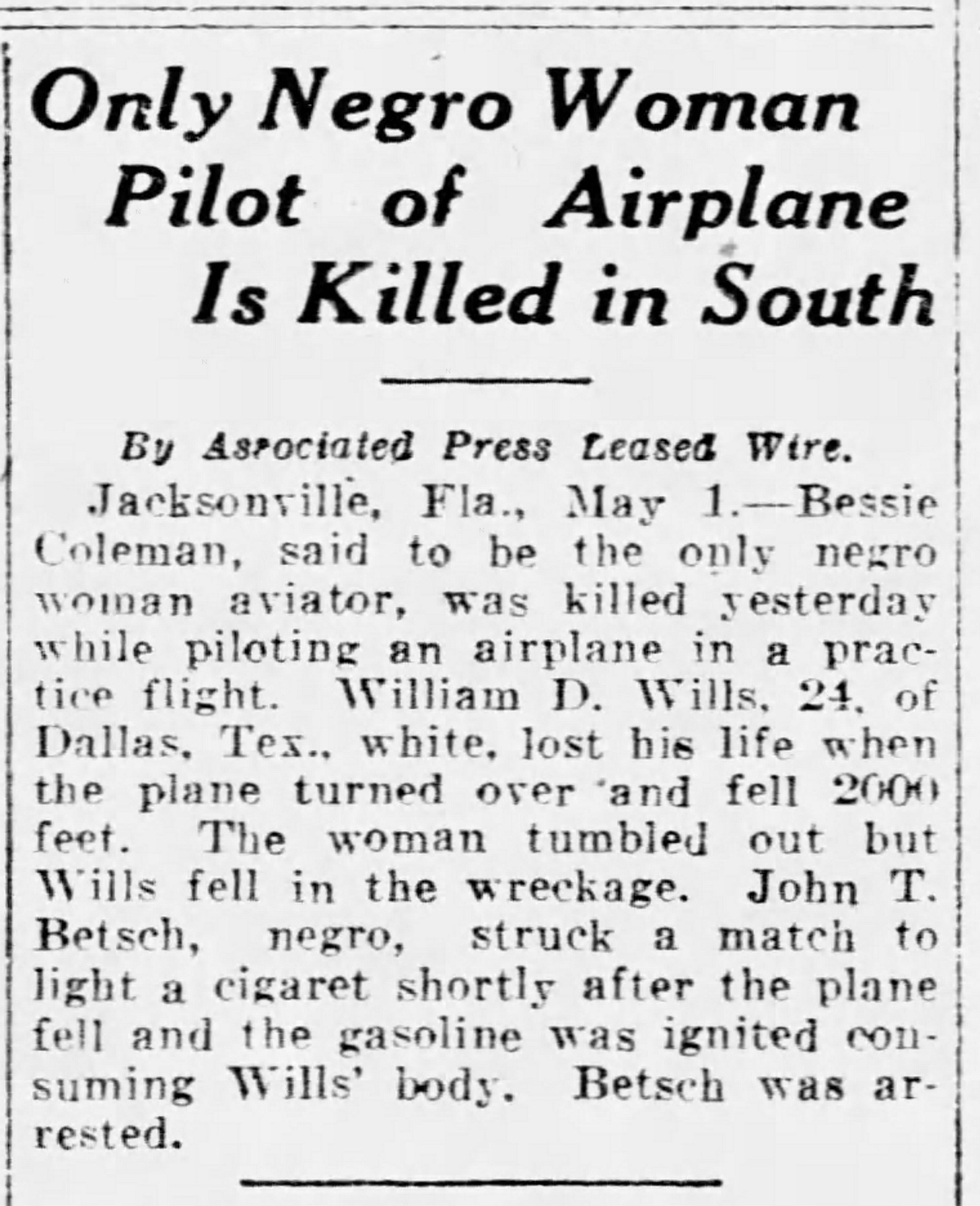

What a truly brave and inspirational young lady. To fight racism and feminism all her life in the pursuit of equality took both strength and courage. Such a tragic end for such a pioneering lady. Excellent piece of research Aryn and wonderfully well written her legacy loves on.
Wow, inspiring… 🥹 “she declared her ambitions to become a pilot, and to, “make Uncle Tom’s cabin into a hanger for a flying school.” Her flying school.”